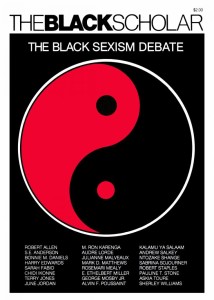Reading Ntozake Shange’s work for this class was far different from a typical experience of completing homework. I began reading “getting to where I haveta be / the nature of collaboration in recent works” from Lost In Language and Sound. I approached this piece as I would any typical reading assignment: pen in hand, notebook opened, and ready to take traditionally detailed notes. I started noting general patterns, listing quotes and overarching themes as I felt I had been trained to do. However, as I progressed, I realized that this writing was far different than anything I had been trained to read. Despite its being different than anything I had previously encountered, the writing still bought a feeling of comfort over me. I had to abandon what I thought was the proper way to proceed and begin to to analyze and understand in a different manner. The themes that I had been taught to diligently search for began to emerge on their own, they were themes that I felt were my own.
I began writing down individual words that struck me as profound. I did this in each of the poems in Lost In Language and Sound. I did the same as I read through Jessica Hagedorn’s Beauty and Danger and even as I watched “Her Pen is a Machete: The Art of Ntozake Shange” and “A Conversation with Ntozake Shange and Dianne McIntyre.” A number of thoughts jumped out to me but what rested with me most was the concept of community and collectivity that Shange achieved in her creations. One of the people featured in “Her Pen is a Machete” identified that what makes Ntozake’s work distinct is that “anyone could play that part,” specifically in reference to the wide spread re-production of For Colored Girls. For some reason these words are the ones that helped me to identify just what it was that set Shange’s work so beautifully far apart from those that I most frequently encounter in higher education. It was this exact collectivity that made me identify the themes within her works as my own.
Within this theme of collectivity, fall other themes of tradition, ritual and even generational elements of healing that felt oh so familiar. Questions arose for me, specifically in reference to her relationship with her mother grandmother and daughter. What I found most interesting was that in A Daughter’s Georgraphy, Shange spoke of her uncertainty in teaching her baby about the devastations that “this place” ie. this world will bring to her daughter. Yet, Lost In Language and Sound, Shange so wonderfully detailed the exact ways in which her grandmother and mother demonstrated freedom for her. I found this rift to be so odd–– who better to teach coming generations how to be free than Ntozake Shange? Alas, even this demonstration of vulnerability was comforting, to know that these fears arise even within the “best” of us.




